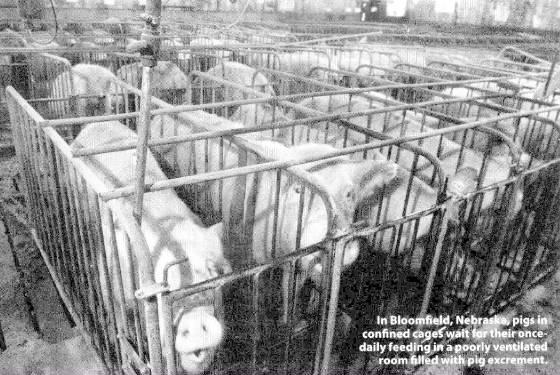 Researchers at the University of Illinois have concluded that antibiotic resistance created by the nearly ubiquitous use of antibiotics on large-scale hog farms is being transferred between organisms like it's a "relay race." Resistant bacteria end up in groundwater, which makes up 97 percent of drinking water in rural areas.
Researchers at the University of Illinois have concluded that antibiotic resistance created by the nearly ubiquitous use of antibiotics on large-scale hog farms is being transferred between organisms like it's a "relay race." Resistant bacteria end up in groundwater, which makes up 97 percent of drinking water in rural areas.
Here's how it works:
- Pigs at huge conventional farms are routinely fed and injected with the antibiotic tetracycline to treat and prevent illness.
- Bacteria in the animals' digestive tracks and manure evolve genetic resistance to the drug. These super bugs are found in high quantities in manure lagoons (the giant ponds of waste that hog farms use as storage).
- Leaking lagoons -- especially those built before the law required them to be lined -- allow bacteria to migrate to ground water.
- Finally, bacteria carrying the gene for tetracycline resistance pass it off to other organisms like some kind of sci-fi Olympic torch.
Read more at TerraDaily The abstract Enter The Meatrix
Disqus Comments